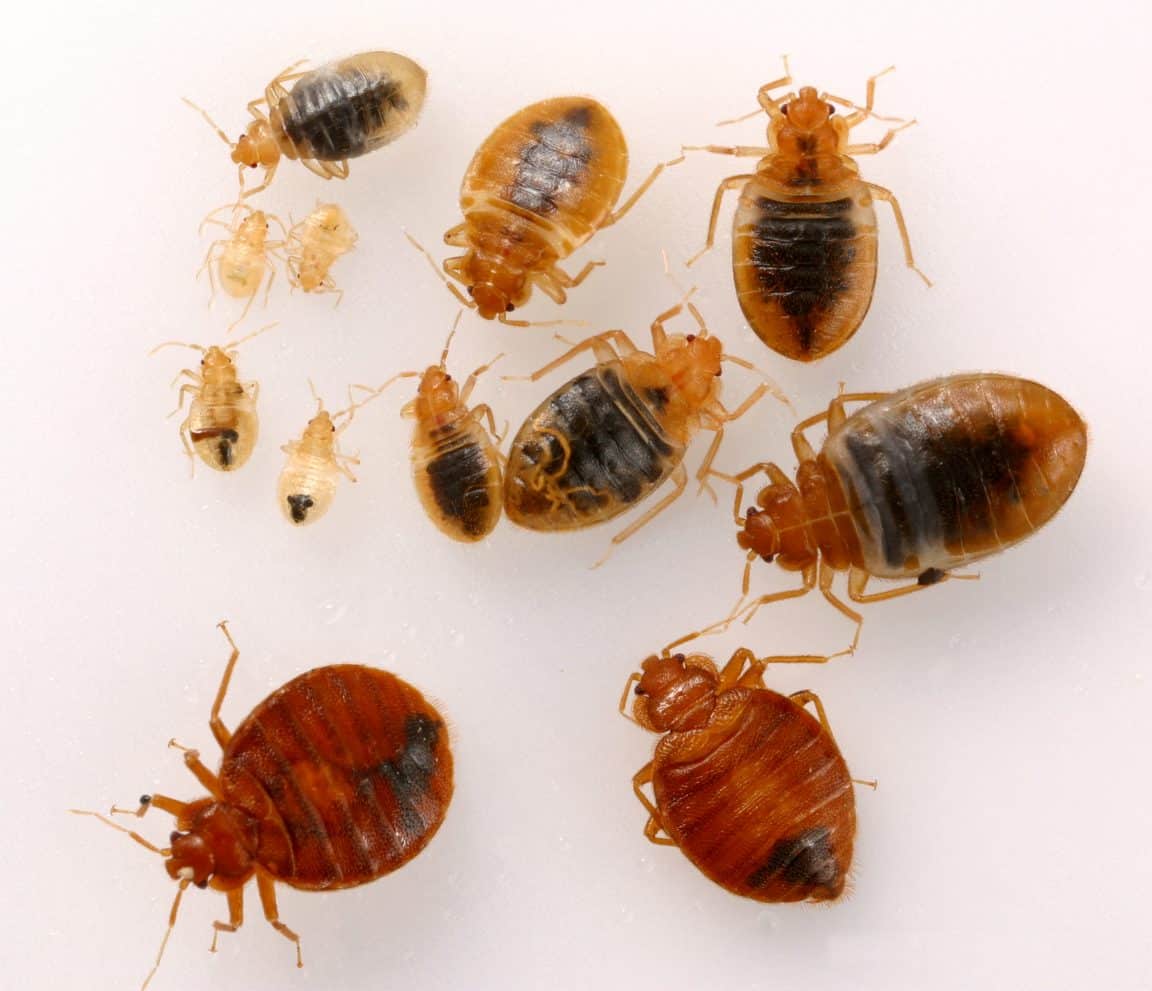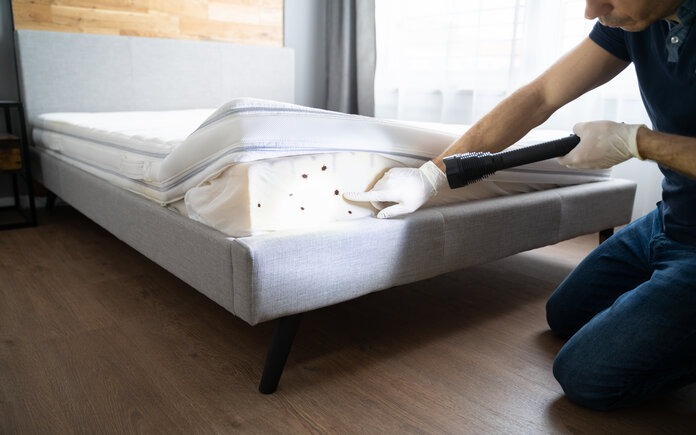As an experienced pest control professional, I often encounter clients grappling with the frustrating reality of bed bug infestations. One common concern arises when these tenacious pests infiltrate personal belongings, particularly clothing and fabrics. In such situations, many wonder if dry cleaning alone can effectively eradicate these unwanted guests.
Through years of hands-on experience, I’ve gained valuable insights into the efficacy of various treatment methods against bed bugs. When faced with infested garments and linens, the question of whether dry cleaning is a sufficient solution is a valid one that warrants careful consideration.
In this guide, I’ll provide an in-depth analysis based on my expertise, shedding light on the capabilities and limitations of dry cleaning in combating bed bug infestations within clothing. Additionally, I’ll explore complementary approaches that may be necessary to achieve comprehensive eradication.
4.6
Over 90 years of experience
Nationwide service area
Free retreatments if pests return
4.7
Treats 20 types of pests
Offers instant online quotes
30-day money-back guarantee
How Does Dry Cleaning Affect Bed Bugs?
If you take a closer look at how dry cleaning is done, dry cleaning isn’t really a dry process of cleaning clothes and textiles after all. It is a sort of a misnomer that you should know about especially if you are fond of buying clothes with a tag that says “Dry Clean Only”.
First and foremost, dry cleaning is a clothing and textile cleaning process that involves a special type of chemical solvent instead of water mixed with a laundry detergent.
This non-polar solvent extracts stains without interacting with the fabric’s polar groups which play a significant role in maintaining the original shape and stretch of the clothes. That is why it is best to launder delicate items or delicate fabrics at the dry cleaner.
Did You Know
Dry cleaning does kill bed bugs but it’s not because of the special type of machine being used nor the temperature needed to get the job done. The answer lies in the chemical solvent employed.
There are various types of chemicals used as a solvent for dry cleaning. The most popular is PCE or Perchloroethylene which is the ideal solution for oil-based stains. PCE is a strong chemical solvent that has low toxicity on humans but potentially lethal on bed bugs.
PCE, on the other hand, has a couple of setbacks such as color bleeding and structure damage. Because of this, some dry cleaning shops use a lighter solvent – Hydrocarbons. This solvent, however, is not potent enough to eliminate bed bugs.
Signs You Have a Bed Bug Problem
One of the most obvious indicators is discovering reddish-brown stains on bedding, mattresses, or upholstered furniture. These are caused by the bugs being inadvertently crushed, leaving behind their blood-filled remains.
You may also notice clusters of tiny, pale yellow eggs or shed exoskeletons in crevices and seams – clear evidence that bed bugs are reproducing in your home. Their musty, almost sickly-sweet odor can become apparent in heavy infestations.
Perhaps the most disconcerting sign is the appearance of bite marks on your skin, often in a linear or zigzag pattern. While not everyone reacts to bed bug bites, they can cause red, itchy welts for those who do.
If you start waking with unexplained bite marks, it’s crucial to thoroughly inspect mattresses, box springs, headboards, and furniture joints for these telltale traces of bed bug activity. The sooner an infestation is identified, the easier it will be to eradicate with professional treatment.
As an expert, I urge vigilance for these warning signs. Early detection is key to preventing bed bugs from spreading exponentially throughout your living space.
Does Dry Cleaning Repel Bed Bugs?
No. The chemical Perchloroethylene or PCE vaporizes into the air and doesn’t provide any lingering effect on clothes that can help repel bed bugs.
Although the said chemical is quite effective in killing bed bugs, it is not advisable to dry clean your clothes very often. The solvent PCE is a significantly strong chemical that can also cause damage to the clothing’s fiber. Simply put, the more you dry clean your clothes, the shorter its lifespan becomes.
Even worse, recent medical studies and researches have found out that PCE poses a serious threat to human health. The National Toxicology Program has classified PCE or PERC (perchloroethylene) as carcinogenic or as a chemical that has a significantly high potential in causing cancer to humans.
Does Dry Cleaning Kill Bed Bugs?
Yes! But of course, as discussed earlier, it all depends on what type of solvent is used in the dry cleaning process.
Perchloroethylene, otherwise known as PCE or PERC is the solvent that can effectively bed bugs that are taking refuge inside your clothes. However, PCE is a strong chemical solvent that can cause damage to the fiber over time which prompts others to use a milder alternative.
Milder alternatives include hydrocarbons and supercritical CO2. However, these solvents are considered less effective in cleaning stubborn stains and grimes as well as in killing bed bugs.
But if PCE or PERC is used, you can expect clean clothes or bed sheets to come out of those sealed plastic bags you pick up from the laundromat!
Preventative Measures to Keep Bed Bugs Away
Here are some things I recommend you start doing immediately if you find yourself with a frequent bed bug problem:
- Inspect secondhand furniture thoroughly before bringing it into your home. Bed bugs can easily hitch a ride on used upholstered items.
- When traveling, carefully inspect the mattress and headboard in hotel rooms for signs of bed bugs before unpacking. Consider using a protective cover on the mattress.
- Reduce clutter around your home to eliminate hiding spots for bed bugs. They thrive in cluttered areas.
- Vacuum frequently, focusing on crevices and seams where bed bugs may be harboring. Dispose of vacuum bags immediately after use.
- Install door sweeps and seal cracks/crevices to cut off entry points where bed bugs could get in from adjacent units or rooms.
- Consider encasing mattresses and box springs in protective covers that prevent bed bugs from nesting inside.
- Be cautious when using shared laundry facilities, as bed bugs can spread via infested laundry items.
What Else Should You Consider Besides Dry Cleaning For Bed Bugs?
As we’ve established earlier, dry cleaning through the aid of PERC is an effective method in cleaning your clothes as well as in killing bed bugs.
However, it should not be your main option in dealing with such infestation since PERC can pose a serious threat to your health and your clothing’s integrity over time.
Fortunately, you can consider these safer alternatives in battling out these stubborn critters:
Essential oils are both effective as a contact insecticide and as a repellent. However, you must make sure that you dilute the oil first before using it. A concentration of more than 50% can be harmful to humans.
Essential oils that can kill and repel bed bugs while keeping your bedroom smelling fresh and appealing are eucalyptus, lemongrass, peppermint, and lavender.
If your clothes are clean or unused but are infested with bed bugs, then there’s no need to get them dry cleaned. You can simply toss them into your dryer and use the highest temperature setting. This will do the trick, as high heat can kill bed bugs!
Diatomaceous earth isn’t something new when it comes to dealing with bed bugs and other types of household pests.
Basically, DE is made of ground fossilized remains of diatoms. It is rich in silica and highly abrasive. It works by sticking to the bugs skin and absorb fluid causing dehydration.
DE is non-toxic and can be used inside homes with children and pets. It is also cheap and can be highly effective in your fight against bed bugs.
Read More: Click here to learn more about diatomaceous earth.
Vacuum and steam cleaning go hand-in-hand in bed bug control. Vacuum cleaning goes first as you try and take out the bugs clustered along the seams and corners of your mattress, box spring, and bed frame.
Read Also: What’re good steamers and vacuums for bed bug control?
Steam cleaning on the other hand, comes next to vacuum cleaning. Steam cleaning kills bed bugs and it is a supplementary step that delivers a lethal blow of intense heat to bed bugs that have managed to escape and survive the suction prowess of your vacuum cleaner.
Final Thoughts
While dry cleaning can be an effective component of a comprehensive bed bug treatment strategy, relying solely on this method may not be sufficient to eliminate a serious infestation, especially if the pests have spread beyond clothing and fabrics. As a seasoned pest control expert, I cannot emphasize enough the importance of a multi-pronged approach.
Combining dry cleaning with professional heat treatments, targeted insecticide applications, and thorough inspections for harboring areas is often the most effective way to rid your home of these resilient pests.
Don’t underestimate the tenacity of bed bugs – enlist the help of experienced bed bug exterminators that work with high temperature treatment methods to help deal with bed-bug infested clothes, bed linens, and other infested items.
With diligence and the right techniques, you can reclaim your living space from these relentless intruders.
If you’re looking for professional pest control help, use the tool below to get estimates from local professionals:














